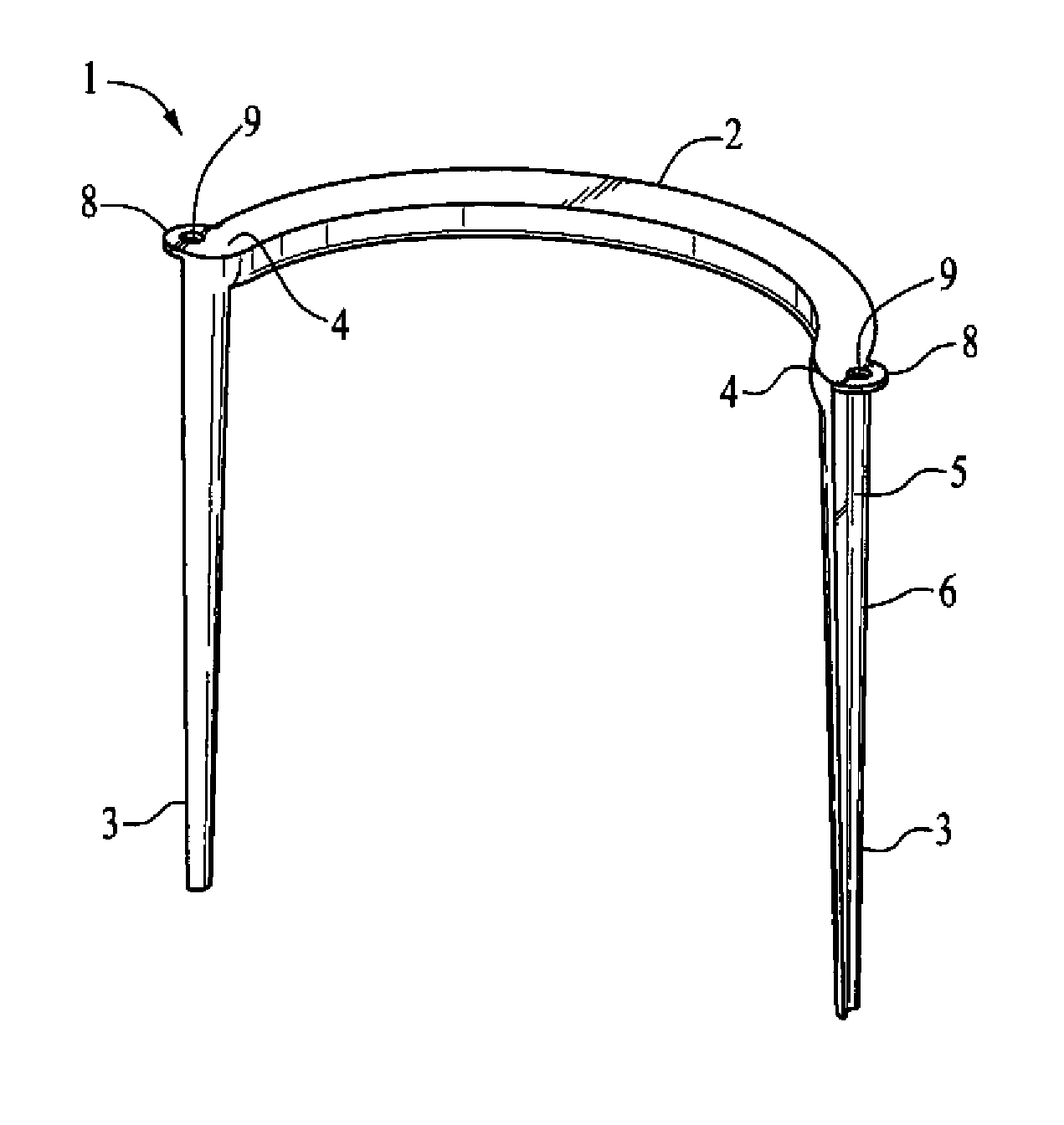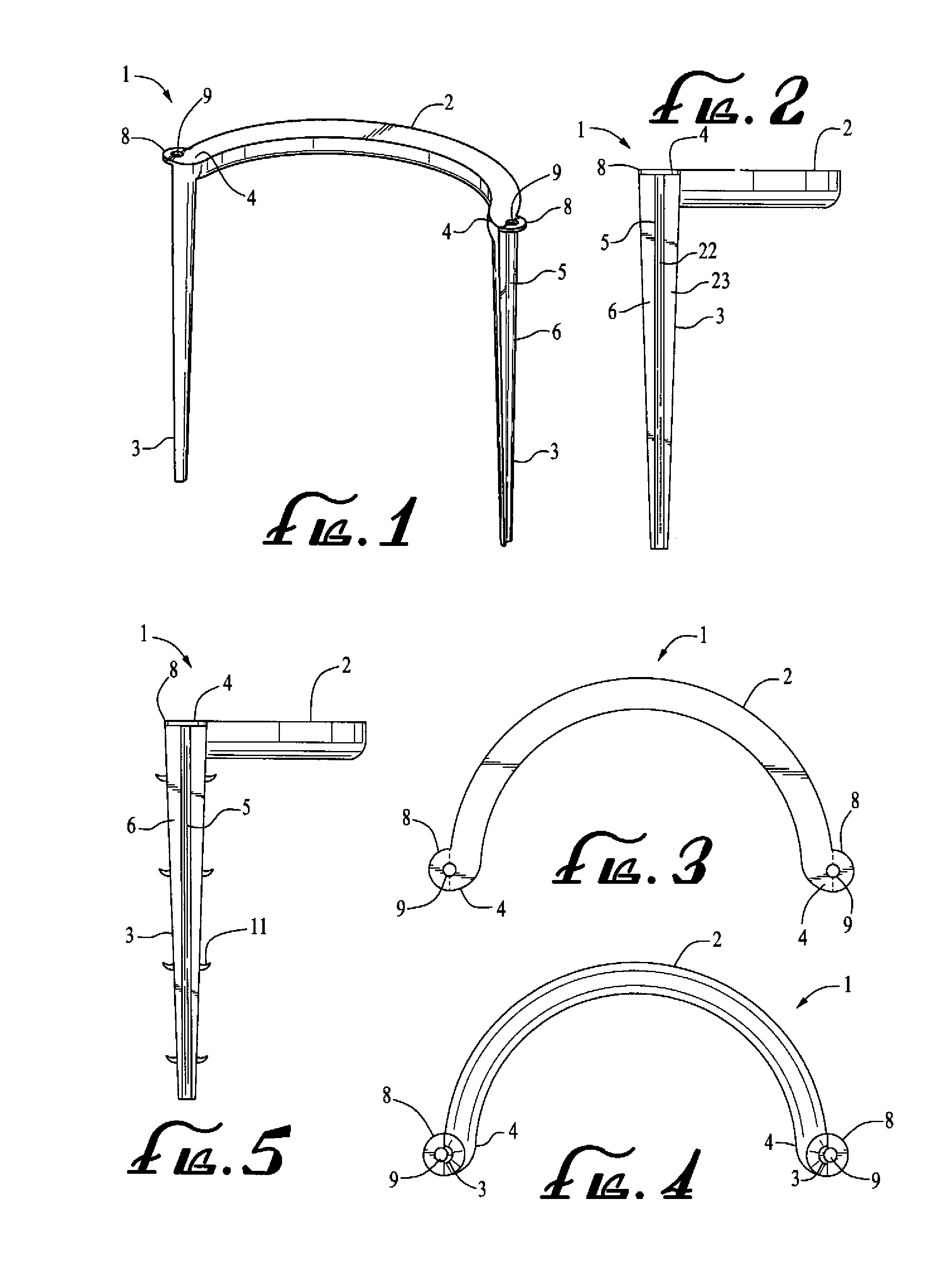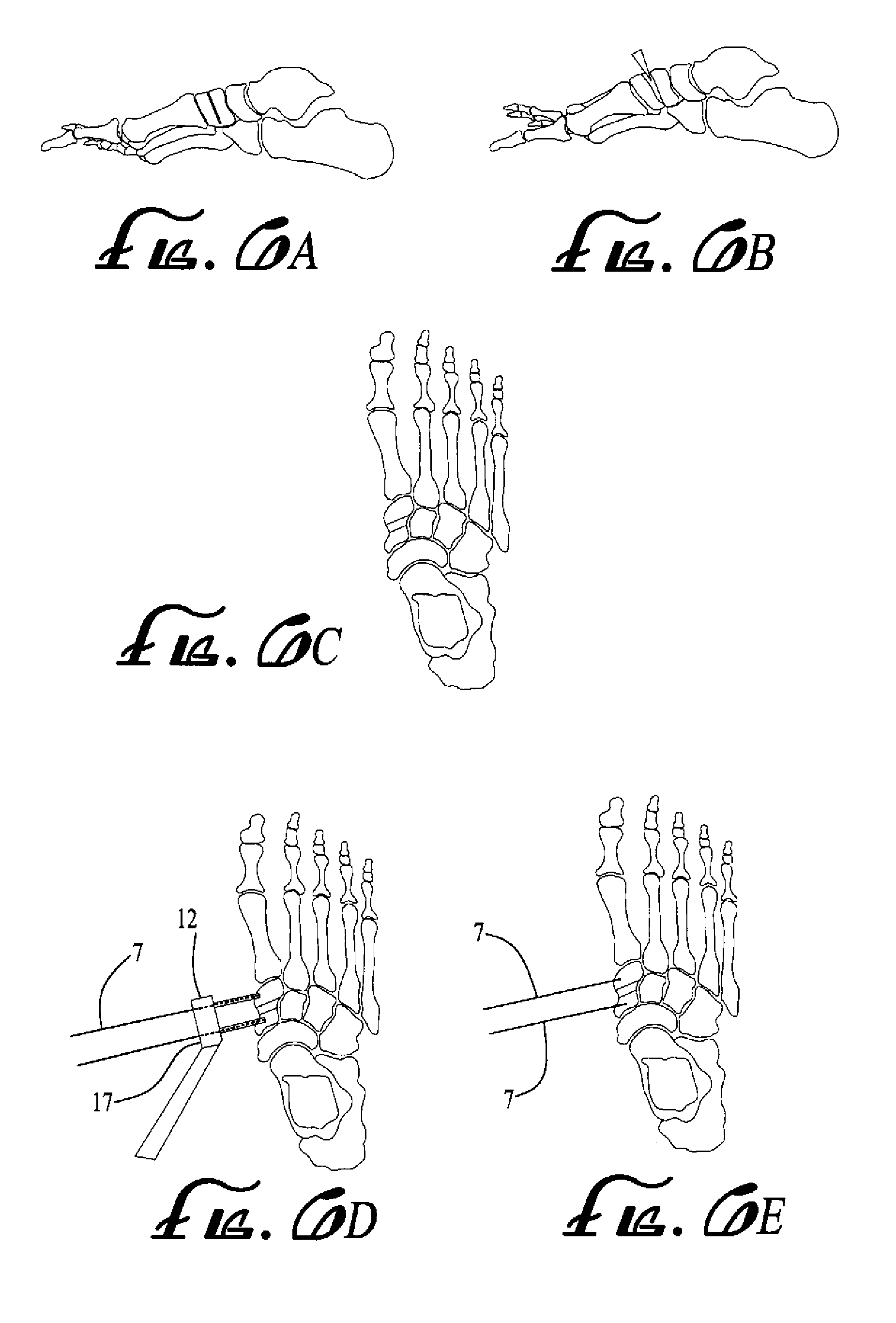Surgical device, system and method of use thereof
a surgical device and a technology of a surgical device, applied in the field of surgical devices, systems and methods, can solve the problems of fractures, less than optimal mechanism of such staples, and quite abrasive percussive force applied to drive staples, etc., and achieve the effect of repairing a bone fractur
- Summary
- Abstract
- Description
- Claims
- Application Information
AI Technical Summary
Benefits of technology
Problems solved by technology
Method used
Image
Examples
Embodiment Construction
[0029]The present invention overcomes disadvantages of the prior art, as identified and disclosed by the inventor, by providing an improved compression staple and an easy-to-use system and method for its insertion for the internal fixation of bone fractures, fusions, and osteotomies. More specifically, the present invention includes a robust grooved and tabbed surgically implantable staple and can be easily inserted over guide wires and across a fractured bone to provide stability and compression across the desired site. The compression staple can be made of a shape memory metal material or alloy, such as nickel titanium, or another metal material or alloy, such as stainless steel or titanium. The staple is preferably made of a non-corrodable metal material compatible with use in the body. The staple may also be made of a bio-absorbable material. Other materials used for bone fixation include vitalium, chrome cobalt, and suitable bio-compatible polymeric materials.
[0030]Different em...
PUM
 Login to View More
Login to View More Abstract
Description
Claims
Application Information
 Login to View More
Login to View More - R&D
- Intellectual Property
- Life Sciences
- Materials
- Tech Scout
- Unparalleled Data Quality
- Higher Quality Content
- 60% Fewer Hallucinations
Browse by: Latest US Patents, China's latest patents, Technical Efficacy Thesaurus, Application Domain, Technology Topic, Popular Technical Reports.
© 2025 PatSnap. All rights reserved.Legal|Privacy policy|Modern Slavery Act Transparency Statement|Sitemap|About US| Contact US: help@patsnap.com



